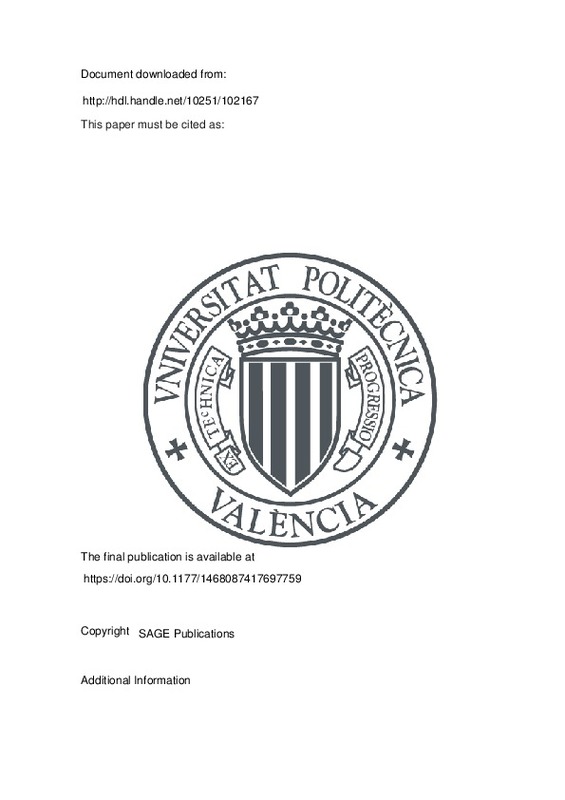JavaScript is disabled for your browser. Some features of this site may not work without it.
Buscar en RiuNet
Listar
Mi cuenta
Estadísticas
Ayuda RiuNet
Admin. UPV
Effects of cavitation in common-rail diesel nozzles on the mixing process
Mostrar el registro sencillo del ítem
Ficheros en el ítem
| dc.contributor.author | López, J. Javier
|
es_ES |
| dc.contributor.author | De La Garza De Leon, Oscar
|
es_ES |
| dc.contributor.author | De La Morena, Joaquín
|
es_ES |
| dc.contributor.author | Martínez Martínez, Simón
|
es_ES |
| dc.date.accessioned | 2018-05-18T04:19:55Z | |
| dc.date.available | 2018-05-18T04:19:55Z | |
| dc.date.issued | 2017 | es_ES |
| dc.identifier.issn | 1468-0874 | es_ES |
| dc.identifier.uri | http://hdl.handle.net/10251/102167 | |
| dc.description.abstract | [EN] A study to experimentally analyze the effect of cavitation on the mixing process in diesel nozzles was carried out. The mixing process was studied through the spray cone angle. It was characterized in two different scenarios: with the liquid length (nearly realistic conditions, that is, evaporative but non-reactive spray) and the heat release fraction (fully realistic conditions, that is, evaporative and reactive spray). In both studied scenarios, the increase in spray cone angle caused by the cavitation phenomenon, which leads to a better mixing process, has been confirmed. Nevertheless, when the variations of the effective injection velocity and the spray cone angle obtained by comparing a cylindrical nozzle (i.e. a nozzle that promotes the cavitation phenomenon) with a conical nozzle (i.e. a nozzle that inhibits this phenomenon) were analyzed together, it was found that, for the cases studied here, the mixing process worsens with the cylindrical nozzle. | es_ES |
| dc.description.sponsorship | The author(s) disclosed receipt of the following financial support for the research, authorship, and/or publication of this article: The authors thank the FPU program of the Spanish Ministry of Education for supporting the PhD studies of Oscar A de la Garza (grant: AP2008-01913) and also thank the PSA Peugeot-Citroen, National Council of Science and Technology (CONACYT) of the Mexican Government (project: CB-239943) and the Royal Academy of Engineering, United Kingdom (project: NRCP/1415/238) for supporting this research. | en_EN |
| dc.language | Inglés | es_ES |
| dc.publisher | SAGE Publications | es_ES |
| dc.relation.ispartof | International Journal of Engine Research | es_ES |
| dc.rights | Reserva de todos los derechos | es_ES |
| dc.subject | Diesel nozzle | es_ES |
| dc.subject | Cavitation | es_ES |
| dc.subject | Injection process | es_ES |
| dc.subject | Spray cone angle | es_ES |
| dc.subject | Combustion process | es_ES |
| dc.subject.classification | MAQUINAS Y MOTORES TERMICOS | es_ES |
| dc.title | Effects of cavitation in common-rail diesel nozzles on the mixing process | es_ES |
| dc.type | Artículo | es_ES |
| dc.identifier.doi | 10.1177/1468087417697759 | es_ES |
| dc.relation.projectID | info:eu-repo/grantAgreement/MICINN//AP2008-01913/ES/AP2008-01913/ | es_ES |
| dc.rights.accessRights | Abierto | es_ES |
| dc.contributor.affiliation | Universitat Politècnica de València. Departamento de Máquinas y Motores Térmicos - Departament de Màquines i Motors Tèrmics | es_ES |
| dc.description.bibliographicCitation | López, JJ.; De La Garza De Leon, O.; De La Morena, J.; Martínez Martínez, S. (2017). Effects of cavitation in common-rail diesel nozzles on the mixing process. International Journal of Engine Research. 18(10):1017-1034. https://doi.org/10.1177/1468087417697759 | es_ES |
| dc.description.accrualMethod | S | es_ES |
| dc.relation.publisherversion | https://doi.org/10.1177/1468087417697759 | es_ES |
| dc.description.upvformatpinicio | 1017 | es_ES |
| dc.description.upvformatpfin | 1034 | es_ES |
| dc.type.version | info:eu-repo/semantics/publishedVersion | es_ES |
| dc.description.volume | 18 | es_ES |
| dc.description.issue | 10 | es_ES |
| dc.relation.pasarela | S\351601 | es_ES |
| dc.contributor.funder | Ministerio de Ciencia e Innovación | es_ES |







![[Cerrado]](/themes/UPV/images/candado.png)

